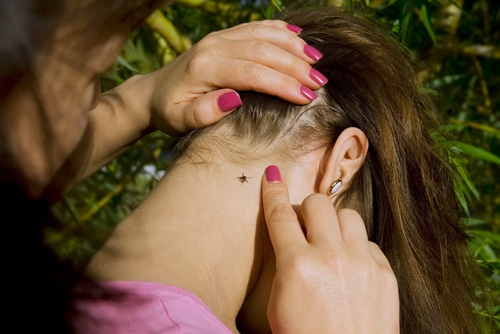Humans are living ecosystems. We’re absolutely covered inside and out with tiny, microscopic organisms. They eat our dead skin, help us to digest our food, and are an integral part of being healthy. However, not all microorganisms are in symbiotic relationships with humans. Many insects, worms, arachnids, and other creepy-crawlies are parasitic. It’s important to prevent these invasive organisms from harming you, your loved ones, or your pets.
Ticks. Most arachnophobes are scared of spiders, but ticks are arachnids as well, and (unlike spiders) these nasty buggers are out for blood. Ticks will happily infect humans, dogs, cats, and most other mammals as well as some reptiles and birds. Ticks can’t jump or fly, but that doesn’t prevent them from latching on when a human or animal host walks by. The biggest worry with ticks is that they are able to pass on pathogens to humans and our pets.
Lyme disease is one of the most common and well known diseases you can get from a tick bite, but there’s a whole slew of others depending on the type of tick and where in Canada you’re bitten. Ticks can be mechanically removed with tweezers, but it’s important that you get the whole tick. If you don’t feel confident removing ticks from yourself or family, get help from your doctor.
Lice. There are actually two forms of human lice: head lice and crab lice. For this blog, we’ll focus on head lice. Mostly an annoyance, head lice feed on human blood. They leave itchy bites, but they rarely infect a person with illnesses.
There are many myths on how to rid a person of head lice from tea tree oil to a shower cap full of butter. Most of these have been proven to be ineffective and can even cause rashes and other nasty side effects. Instead, we suggest either mechanically removing lice by using an extra fine comb daily for a couple weeks (this works in 50% of people), shaving your head (a great solution for little boys which works 100% of the time), or asking your doctor or pharmacist for a medicated lotion — you will need to use the lotion two or three times over the next month in order to kill all the lice.
To prevent lice from becoming a problem in your life, teach your child to never borrow shirts, towels, bedding, combs, or brushes from other kids. And, if they lend these items to a friend, to wash them thoroughly before using them again. These items can be disinfected either by heating them to 60 °C for 30 minutes or by keeping them outside and away from a human food source for 2 weeks.
There are many parasites that are happy to feast on human blood. During the summer months, it’s important to check your family members over regularly for ticks. When school starts up again, you may want to check your child weekly for signs of lice. Health Risk is devoted to keeping you and your family healthy. If you have any questions about how to reduce your risk for parasites, talk with your family doctor. And if things do go wrong, remember Health Risk has got your covered.













